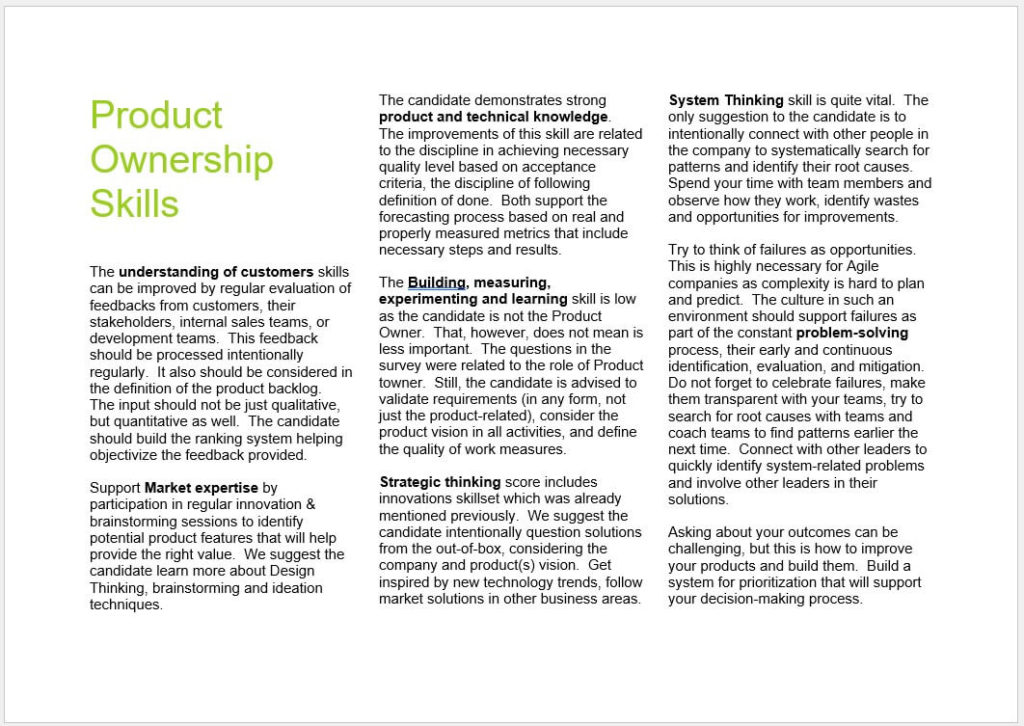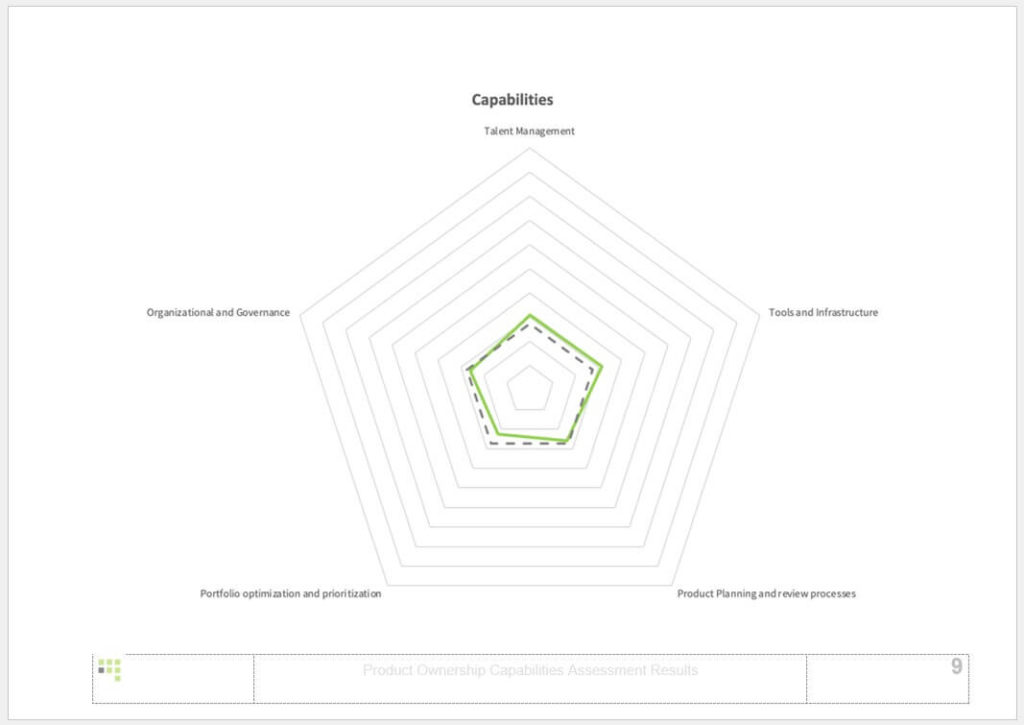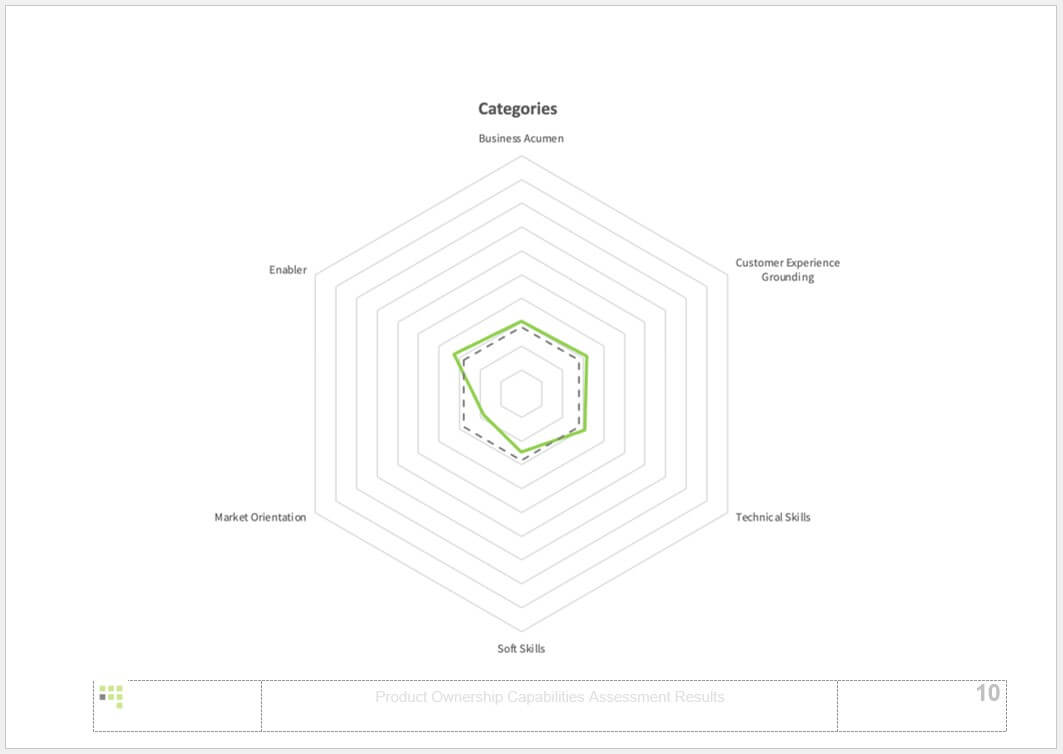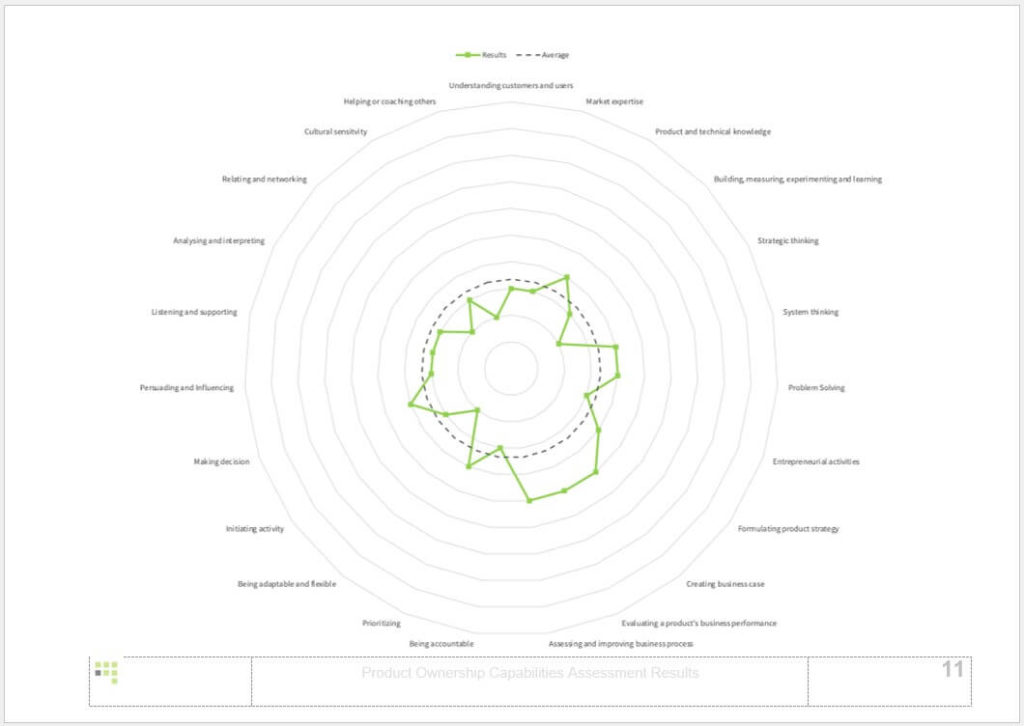
Discover the potential for improving the implementation of Agile in your company. Set up a meaningful development plan, whether for the introduction or enhancement of the maturity of applying agile approaches.
Agile transformations are a complex and long-term effort that focuses on all aspects of a company, the organizational structure, processes, products, tools, the environment, and especially the fundamental culture of the organization.
The main principle of the agile approach is feedback. Transparency helps reveal blocking factors and inefficiencies while also providing an opportunity to uncover positive outcomes from individuals involved in the transformation.
To understand the current state of the transformation and, more importantly, to guide your company in future endeavors, ScrumDesk has developed an assessment of the company’s agility.
The assessment focuses on various areas of the agile team. Instead of simple questions like ‘Do you have morning meetings or not?’ we’ve prepared questions that delve deeper into understanding people, principles, and capabilities, the correctness of implementing agile practices and processes.
The goal of this assessment is not to reward or punish individuals. It aims to reflect the situation from an external standpoint, so teams can find inspiration for potential improvements, and company leadership can focus more strategically.
Agile transformation is based on continuous feedback and learning; it’s a never-ending journey. Understanding where your company and teams stand in the agile transformation is crucial.
Companies with multiple agile teams.
Companies implementing Scrum, Kanban, ScrumBan, Scaled Agile Framework (SAFe).
Companies operating in an agile manner for more than 3 months.
You will explore the potential and the level of quality in implementing agile practices within your company in 17 areas related to Agile.
An overview of the team’s status in a concise form. Team comparisons to seek opportunities for further improvements and identification of systemic constraints.
Specific recommendations for changes aimed at the organizational and team state.
Area
Agile approaches both require and support a change in corporate culture.
Proactivity, intensified collaboration, an approach to transparency, respect, goal-oriented focus, innovativeness, discipline
Within the team, we will also assess the extent of its dysfunctions.
Area
In-depth analysis of proceedings from the perspective of artifacts, processes, and the facilitation of agile ceremonies.
Planning Program Increments (PI planning).
Preparation of product backlog, sprint planning, stand-ups, sprint review, and retrospective.
Area
Organization of the product backlog, methods of recording requirements, their segmentation, and documentation.
Working with different types of requirements.
Area
Scrum Master’s approach to transparency, discipline, constraint management, collaboration of Scrum Masters in system change alongside management, the Scrum Master’s work with the team, and support of the Product Owner.
Product Owner’s approach to preparing the product backlog, its prioritization, medium- and short-term planning, communication with stakeholders and the team, the approach to product management from the perspective of vision and strategy, working with metrics.
Coordination of product owners in the case of developing more complex products.
They have the ability to position the product in the market and, through strategic thinking, define the right product.
Area
Within the assessment, we also focus on technical practices and the team’s approach to continuous integration, product design, implementing Extreme Programming practices, testing methods, and DevOps.
We will delve into your metrics and identify potential for change in the application of your agile processes and practices to help reduce redundancy.
We will also examine the setup and your work with tools (e.g., JIRA).
Result
For each team, I will provide a detailed overview of the state of Agile implementation and suggestions for improvement.
Additionally, we will prepare a team comparison for the company’s management and transformation group by comparing teams against the real company standard represented by averaging the team evaluations.
Thus, the task is not so much to see what no one yet has seen, but to think what nobody yet has thought about that which everybody sees.
Arthur Schopenhauer






Don't miss a selection of the best of Agile that our mentors have encountered. Not only from the world of products, development, tips and tricks, but sometimes also humor. We ship regularly, once in a while :) #QualityOverQuantity